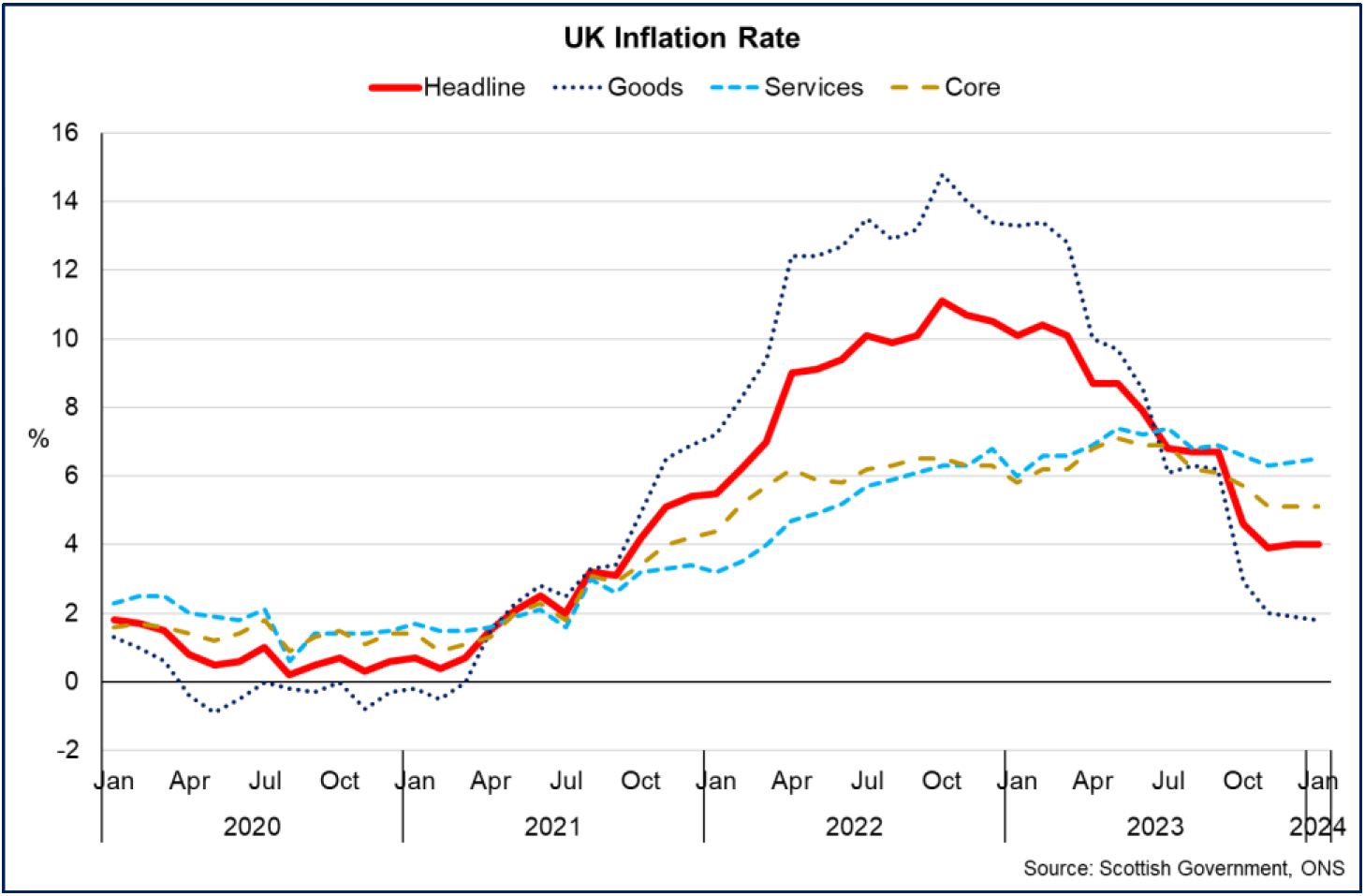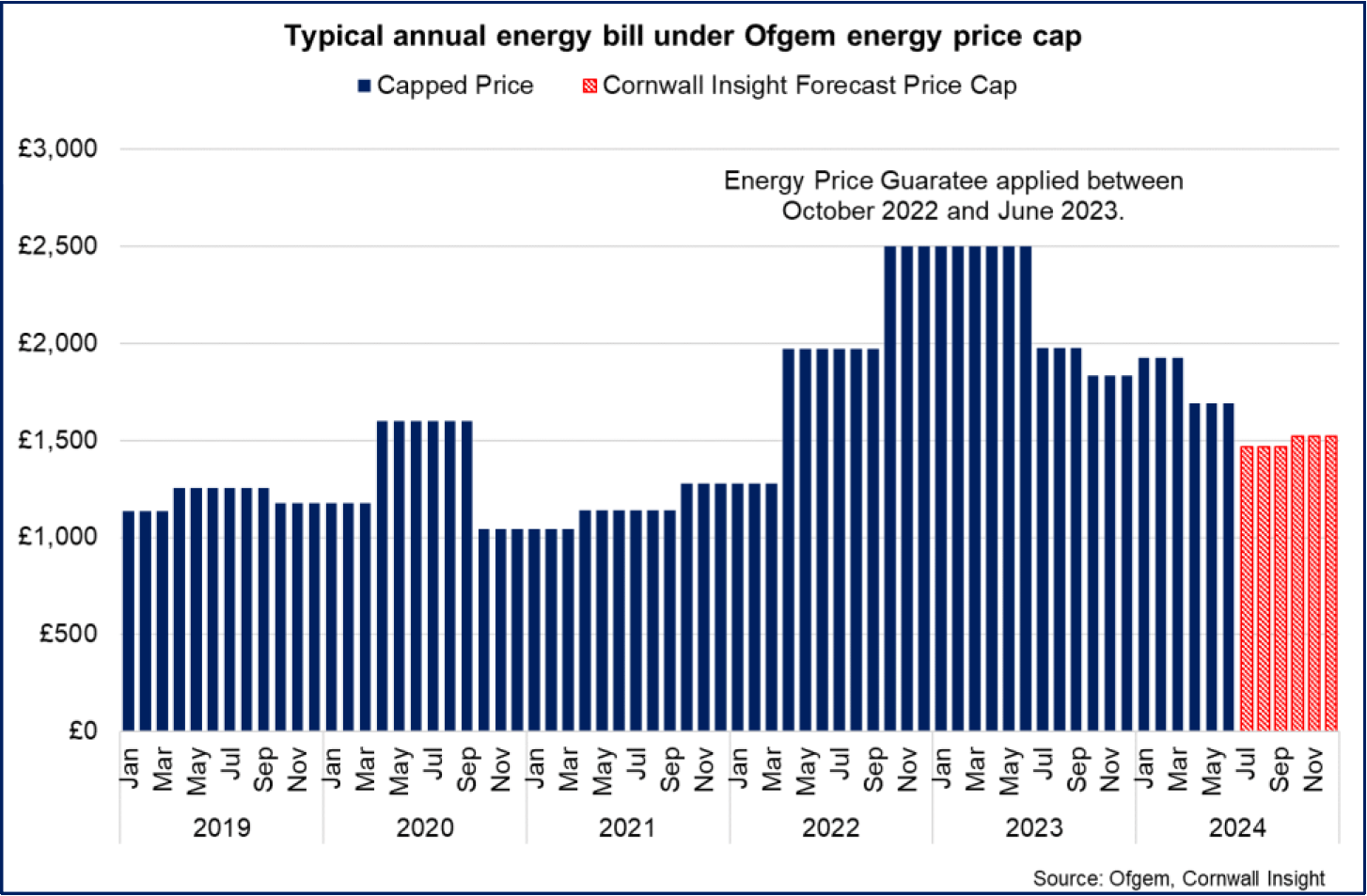Publication - Research and analysis
Scottish economic bulletin: March 2024
Provides a summary of latest key economic statistics, forecasts and analysis on the Scottish economy.
This document is part of a collection
Inflation
Inflation was unchanged in January at 4%, whilst core inflation also held steady.
- The inflation rate was unchanged in January at 4% as inflationary pressures continued to stabilise at the start of the year.[2]
- Key downward contributions to the inflation rate over the month came from furniture and household goods (0.4%, down from 2.5%) and food and non-alcoholic beverages (6.9%, down from 8%). In contrast, the largest upward contribution came from housing and household services, mainly higher gas and electricity charges, in which the annual inflation rate rose from -3.4% to -2.1%.

- Core inflation, which excludes energy, food, alcohol and tobacco, was unchanged in January at 5.1% and continues to reflect the current persistence of services prices inflation which rose slightly from 6.4% to 6.5% while goods prices inflation continued its downward trend from 1.9% to 1.8%.
- The recent upward contribution in gas and electricity price inflation partly reflects the 5.1% quarterly increase in the Ofgem Energy Price Cap in January. The capped price is 23% lower over the year compared to the Energy Price Guarantee in place during the same period in 2022, however remains 51% higher compared to two years ago in January 2022. The Energy Price Cap is scheduled to fall 12.3% in April and is forecast to fall a further 13.3% in July, supporting a fall in the headline inflation rate below 3% during 2024.[3],[4]

Contact
Email: OCEABusiness@gov.scot
There is a problem
Thanks for your feedback